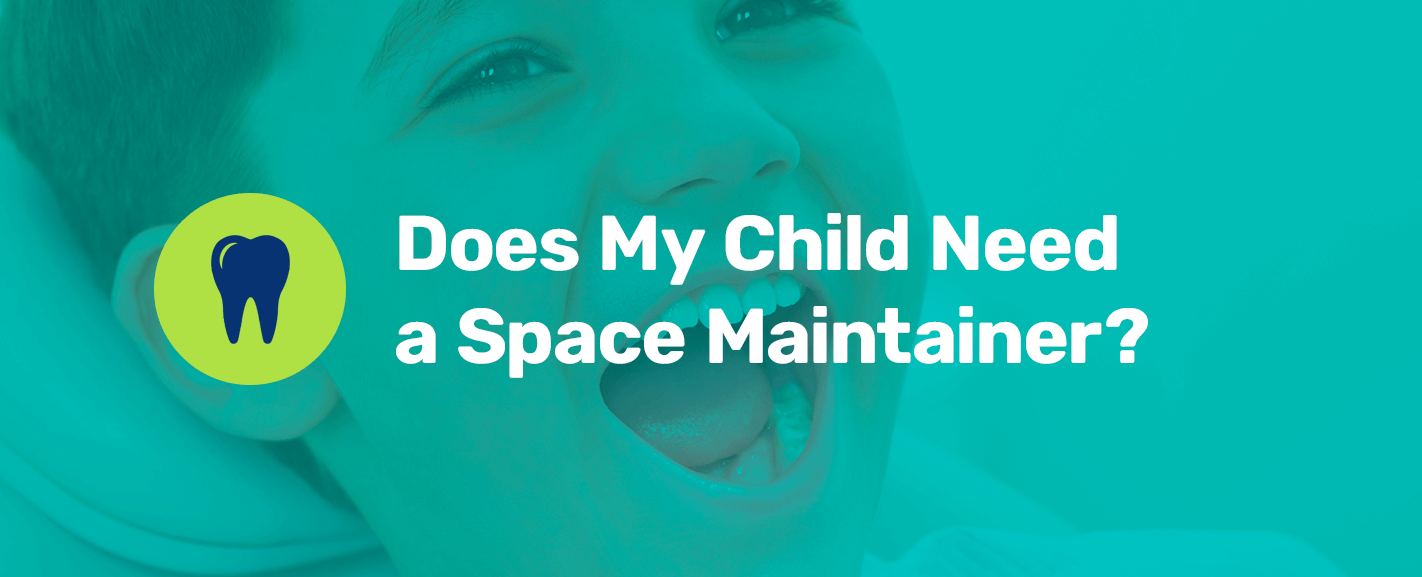A space maintainer is a dental device used in pediatric dentistry. It helps children avoid the negative side effects of premature loss of their baby teeth. But there are many situations when children could lose one of their baby teeth before the appropriate time. This could leave you wondering if you need to get one for your child. Discover why your child might need a space maintainer, as well as other tips, like how to clean space maintainers.
Reasons Your Kid Might Need a Space Maintainer
It’s important to combat premature primary tooth loss in children. It’s normal for children to lose their baby teeth at the appropriate time. But if a child loses one or more of their baby teeth too early, they could face dental issues later in life. These issues include adult teeth not having enough space to grow in correctly or coming in very crooked. Space maintainers keep the empty space open so a child’s mouth can develop naturally, even after premature tooth loss, and have enough space for the developing permanent teeth.
Here are some of the situations when a space maintainer should be placed in your child’s mouth to protect their dental health.
Extraction Due to Cavities
Children are susceptible to holes or structural damage to their teeth, which are commonly known as cavities. One of the main causes of cavities is tooth decay caused by bacteria in plaque. As plaque builds up on the surface of the tooth, the bacteria secrete an acid that can erode the tooth enamel, which is the hard outer coating of the tooth. This makes the tooth susceptible to further damage and decay, causing cavities.
Left untreated, the decay caused by cavities can force the child to need to have the affected tooth removed. This process will leave behind a gap between your child’s other teeth. Spacers are necessary for baby teeth in this situation to keep the teeth in their proper positions. Without a space maintainer in place, the neighboring teeth that are still in the mouth can migrate into the newly vacated space and prevent the developing permanent tooth still below the gums from having the proper spot to grow into.
Tooth Loss From Injuries
Children love to be active and play with their friends, but sometimes, accidents can happen and can lead to tooth loss.
When tooth loss from injury occurs, your child will need a space maintainer. This maintainer will stop the other teeth from shifting and crowding into the empty space. This will ensure the adult tooth comes in properly, as well.
Over-Retained Baby Teeth
Some children may experience over-retained baby teeth, which is another situation where a space maintainer can be crucial. Having over-retained baby teeth is a condition where baby teeth have loosened and then tighten back into the gums. This situation keeps adult teeth from erupting properly into their correct spaces and can lead to extreme crowding of the teeth.
The solution is usually to extract one or more of the crowding baby teeth. Your child’s pediatric dentist may then install a space maintainer to ensure proper shifting and adult tooth eruption.
Types of Space Maintainers for Children
Two main categories of space maintainers exist — unilateral and bilateral. Learning more about these types can help you know which may be best for your child.
Unilateral Space Maintainers
Unilateral space maintainers fit to one side of the mouth. These space maintainers include the following types:
- Band-and-loop: A band-and-loop space maintainer maintains space after the loss of a baby molar or after the eruption of the first permanent molar. It works by cementing a band to the second baby molar or first permanent molar. Then, a loop contacts the distal surface of a nearby remaining baby tooth.
- Distal shoe: The distal shoe space maintainer is for keeping a space open for a child’s unerupted permanent molars. It’s commonly used after a child loses a second baby molar prematurely. The distal shoe acts as a guide for the erupting permanent first molar, ensuring it grows in correctly. This space maintainer sometimes looks like a stainless steel crown with an extension segment attached.
Bilateral Space Maintainers
A dentist may recommend using bilateral space maintainers after a child has lost baby teeth on both sides of their mouth. Here are two types of bilateral space maintainers:
- Lower lingual holding arch (LLHA): This bilateral device connects two baby or permanent molars on the lower jaw with metal bands on each one. A wire runs behind the lower teeth to connect those bands and keep the lower molars from moving forward. This helps the permanent teeth erupt properly.
- Nance holding arch: The Nance holding arch is only for maintaining space in the upper jaw. It works by resting a button made of acrylic on the roof of the patient’s mouth. The Nance holding arch maintains the length of the dental arch while preventing permanent molar misalignment.
How to Take Care of a Space Maintainer
With proper care, your child’s space maintainer can last a long time. In an ideal situation, a child will wear their space maintainer until the permanent tooth erupts to fill the empty space. This process can take months or even years depending on when they lost the tooth and which tooth it was.
Taking care of a space maintainer will help your child get the most out of theirs. Here are some tips on how to care for a space maintainer:
- Practice good oral hygiene: Besides brushing their teeth and flossing like normal, your child must learn how to clean their space maintainer. This means they must put extra effort into their teeth cleaning routine to avoid the buildup of plaque around the maintainer.
- Avoid certain foods: Some foods can damage your child’s space maintainer. Avoid chewing gum, eating taffy and sucking on hard candies. Your child should also avoid hard, crunchy foods like carrots, corn on the cob and popcorn.
- Visit the pediatric dentist: Routine visits to your child’s pediatric dentist are key. The dentist will be able to keep track of your child’s progress and ensure the space maintainer is functioning properly.
- Practice awareness: Encourage your child to let you know if they feel like something is wrong with their space maintainer. If their maintainer has become damaged or loose, you need to take your child to the dentist for a repair right away.
Choose Sprout Pediatric Dentistry & Orthodontics for Your Child’s Space Maintainer Needs
Space maintainers are important for many children. Addressing early tooth loss is key to a healthy, happy smile down the road. If your child is in need of a space maintainer, choose Sprout Pediatric Dentistry & Orthodontics as your child’s new pediatric dentist. We create a calm, comfortable setting in our Portland, Oregon, dental office to help your child feel comfortable during their visit. And our experienced dental team has the skills and education necessary for excellent results.
Contact us today for more information or to request an appointment!

A Portland native, Dr. Paul went to dental school at OHSU and finished his Orthodontic Residency in Philadelphia, PA. Dr. Paul works with children and teenagers at his orthodontic practice.




